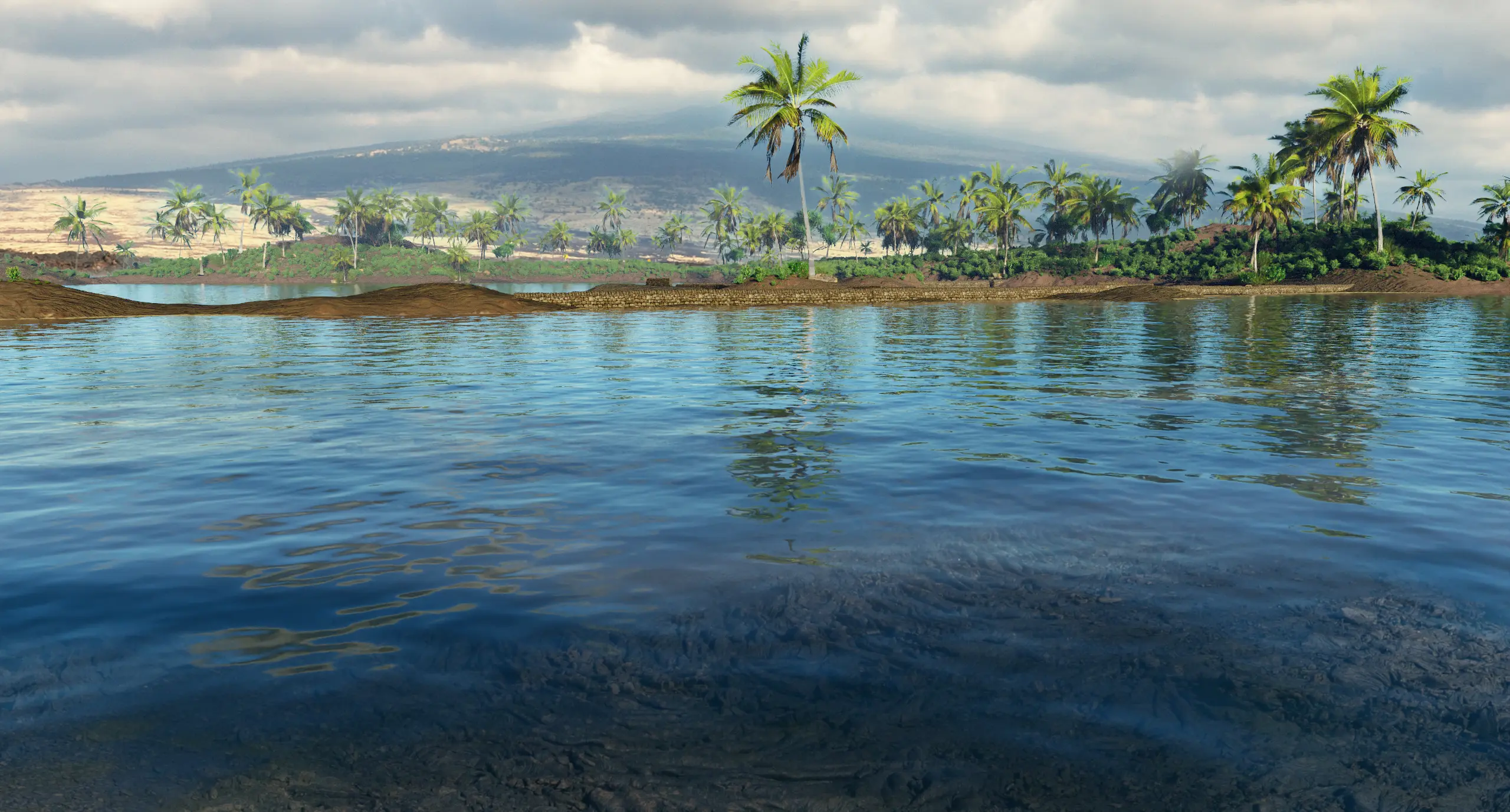Types of Hawaiian Fishponds
Hawaiian aquaculture adapted to different coastal environments through six distinct pond types, each designed to work with specific natural conditions. The three major types (loko kuapā, loko puʻuone, and loko wai) represented the most extensive aquaculture systems. Three additional types (loko iʻa kalo, loko ʻumeʻiki, and hapunapuna) served more specialized functions. Each type required different management strategies, but all shared the principle of working with natural water systems rather than against them.
Loko Kuapā
Loko Kuapā were the most common type, built with seawalls (kuapā) in shallow water or on reefs. These walls connected natural embayments or rock points, creating enclosed areas with controlled water flow through sluice gates called mākāhā. Pāʻaiea was a loko kuapā, using the natural curves of the coastline between Keāhole and Kaʻelehuluhulu to create what historical accounts describe as a pond three miles wide.
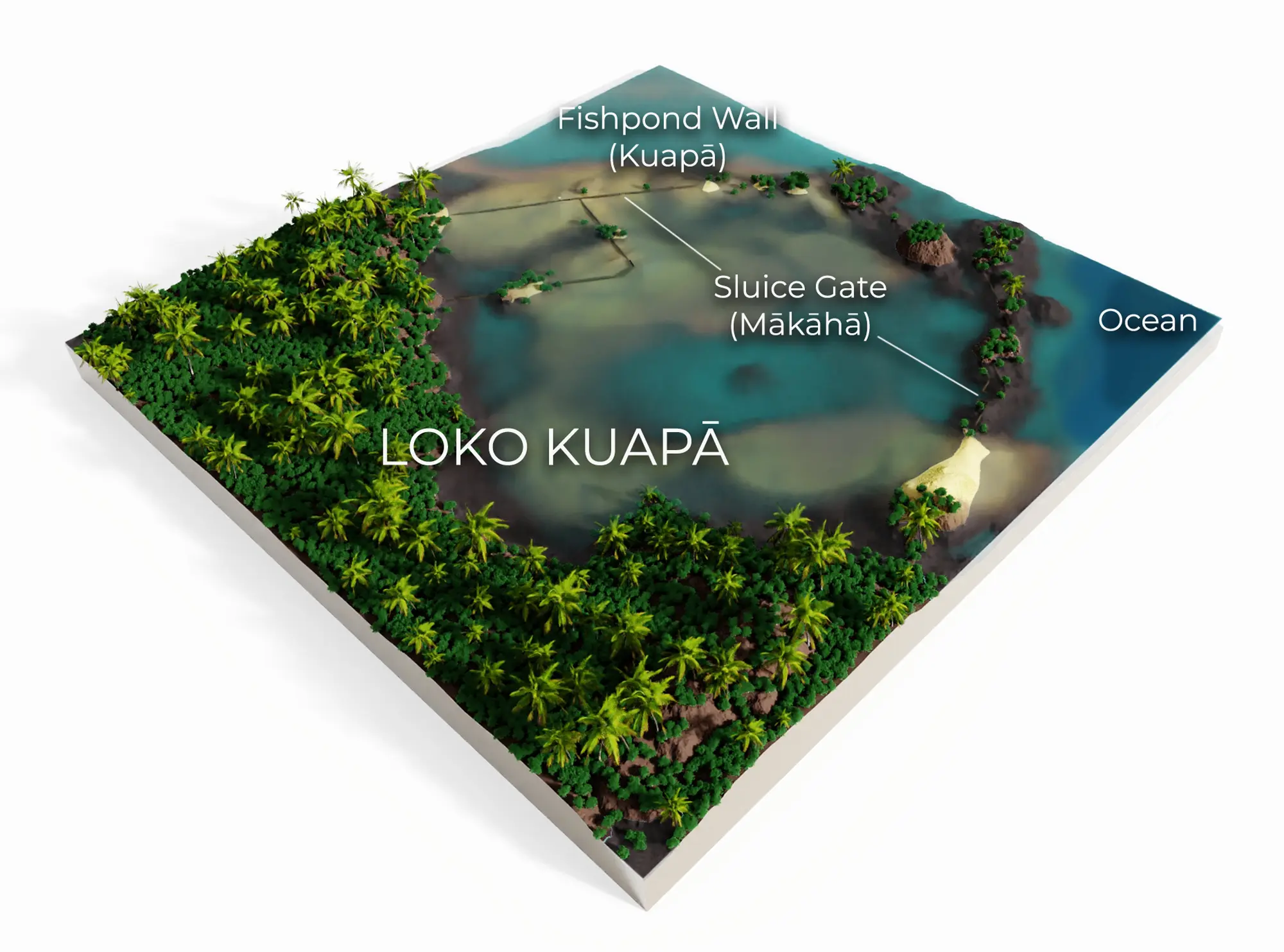
Loko Puʻuone
Loko Puʻuone formed naturally when barrier beaches or sand ridges developed parallel to the coast, creating isolated shore ponds. These required less construction but depended on natural sand movement to maintain their enclosures.
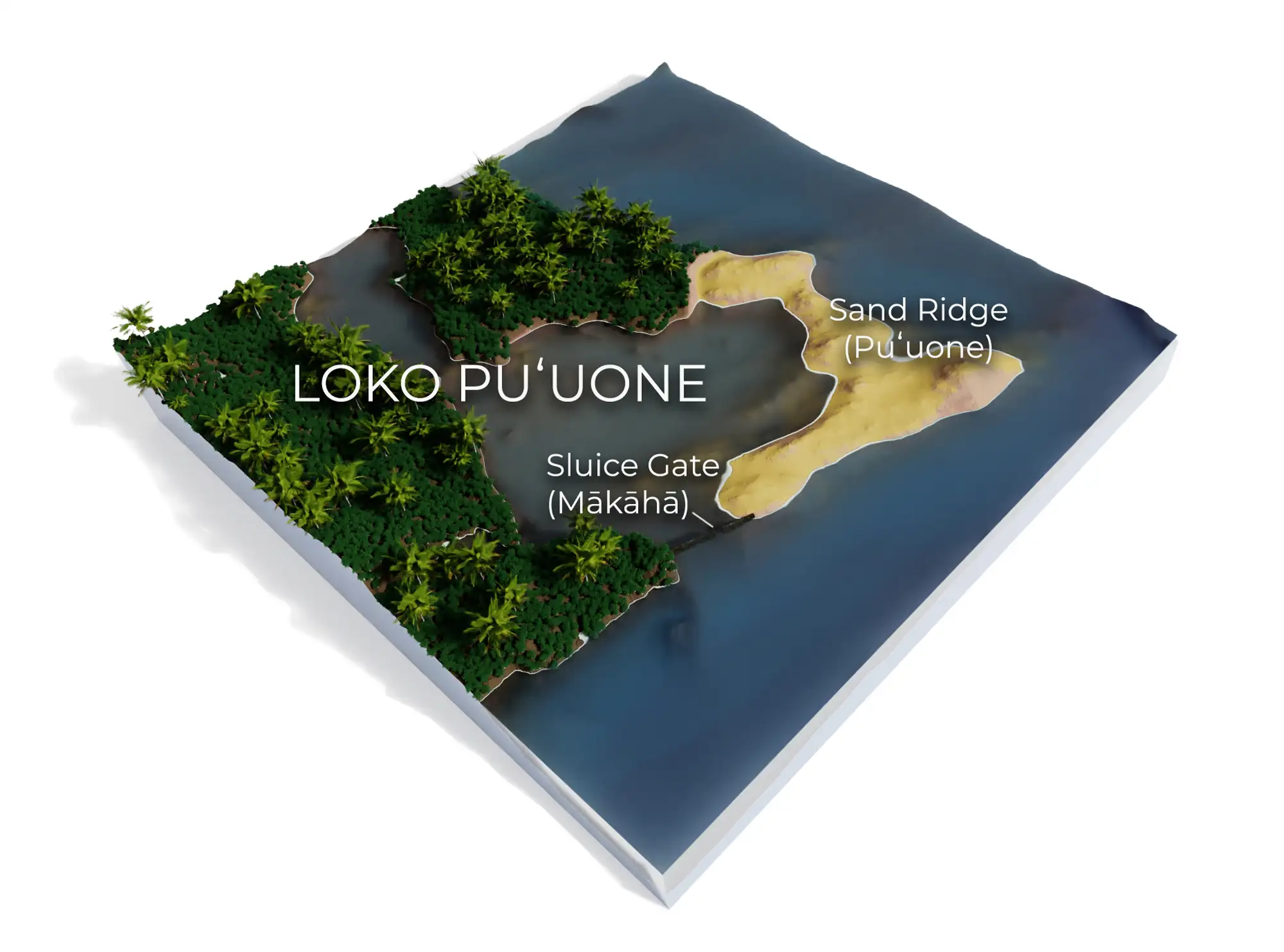
Loko Wai
Loko Wai were inland freshwater ponds, typically fed by springs or streams. While less common on the dry Kona coast, they thrived in wetter areas where freshwater sources were abundant.
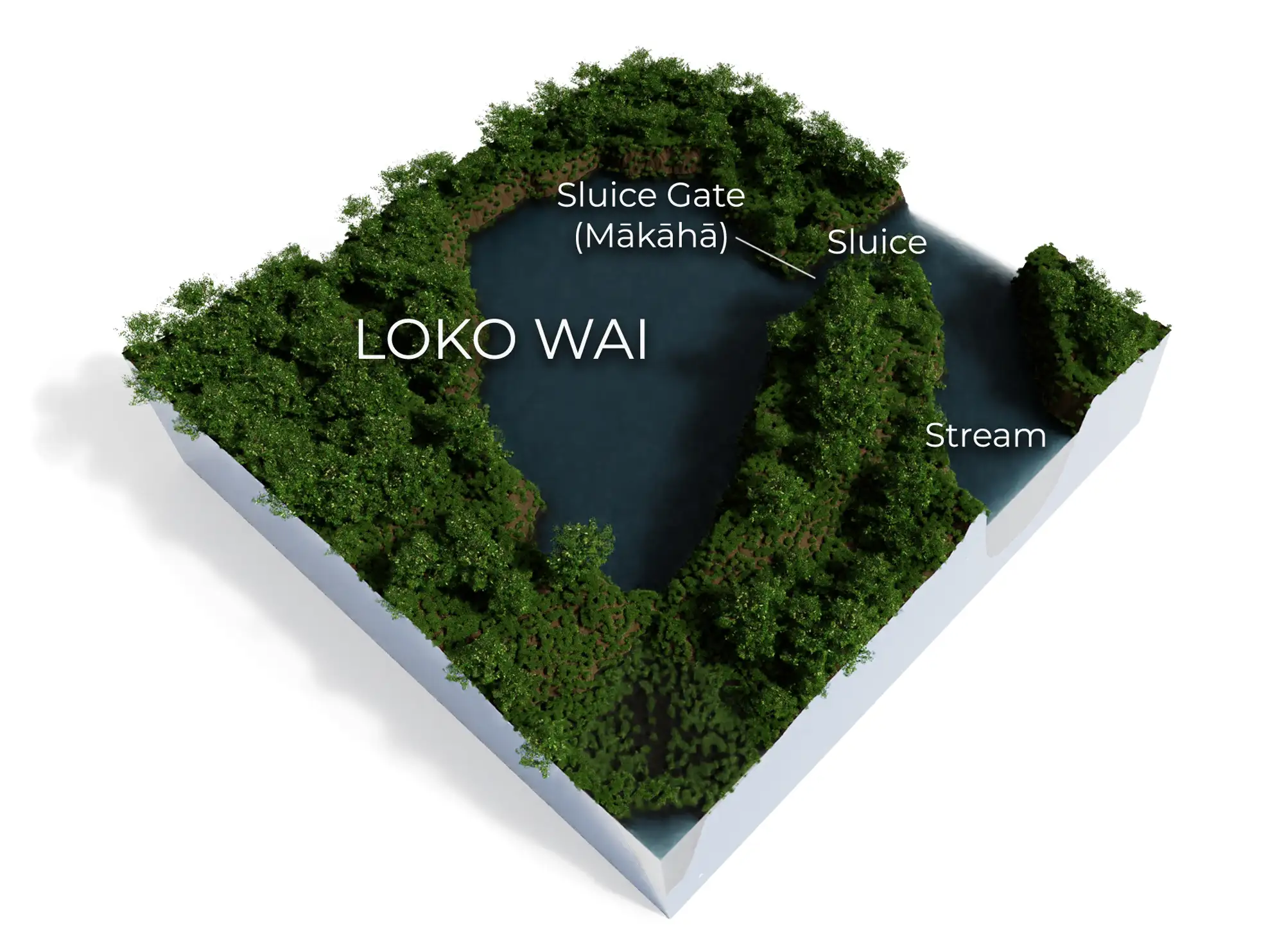
Mākāhā: Engineering Water Control
Many fishpond types incorporated mākāhā, sluice gates built into pond walls or natural barriers that controlled water flow between ocean and pond. These ingeniously designed gates allowed smaller fish to enter with incoming tides while preventing larger, mature fish from escaping. Konohiki adjusted mākāhā openings to manage water exchange, controlling salinity, temperature, and oxygen levels throughout the pond.
Mākāhā were typically constructed with vertical wooden slats or stone posts spaced to create adjustable barriers. During high tide, ocean water flowed in, bringing nutrients and small fish. During low tide, water drained back through the gates, but mature fish remained trapped by the narrow spacing. Konohiki could also modify gate openings seasonally, responding to spawning cycles, weather patterns, and the needs of different species at different life stages.
This wasn't passive infrastructure. Maintaining mākāhā required constant attention—clearing debris, adjusting spacing, repairing storm damage. The gates represented sophisticated hydraulic engineering that transformed static walls into dynamic management tools, allowing konohiki to orchestrate the entire pond ecosystem.
ʻĀwili: The Mixing
"ʻĀwili is the descriptor for the mixing of the fresh and the salt water. It's like we're making a lei wili, winding around. And so when you look at the water and you're in the water or fish are swimming through the water, there's a mixing that goes on. And that term is ʻāwili." -Bobby Camara
ʻĀwili: Where Fresh and Salt Waters Dance
The key to loko iʻa productivity lay in the mixing of fresh and salt water—a process Hawaiians called ʻāwili. Freshwater springs percolate through porous lava meet ocean water seeping through the pond walls, and create brackish environments where temperatures, salinity, and nutrients vary throughout the pond. The mixing of fresh and salt water causes disconcerting haziness in the pond.
This mixing isn't random. Anchialine pools dotting the coastline contribute cool freshwater that floats atop warmer, denser saltwater. Areas near mākāhā are saltier as ocean tides push seawater in and out. Shallow sections over rock heat quickly, while deeper zones near springs stay cooler. These gradients create diverse micro-habitats within a single pond.
Different fish species thrived in different zones. ʻAnae (mullet) preferred certain salinity levels. ʻAwa adapted to others. Some areas supported dense limu growth that fed herbivorous fish. The pond wasn't just stocked—it was gardened, with fish choosing their preferred habitats within a managed ecosystem that produced its own food chain from the bottom up.
Managing Abundance: Multiple Species, Multiple Strategies
Traditional loko iʻa supported far more than fish. Limu (seaweed) grew throughout the pond, providing both food for herbivorous species and a harvest crop for people. Honu (sea turtles) lived in the ponds, consumed by families who didn't regard them as ʻaumākua (ancestral deities). ʻŌpae ʻula (red shrimp) thrived in rocky areas and anchialine pools, harvested with fine-mesh nets and used as palu (chum) for ocean fishing.
The varieties of fish reflected aliʻi preferences and careful management. Within larger ponds like Pāʻaiea, smaller holding pens temporarily stored ocean catches of ʻōpelu or aku until the aliʻi requested them. Resident species like ʻanae and ʻawa swam freely throughout the pond, feeding on natural food sources rather than requiring external inputs.
Expert kāhuna understood which species thrived in which conditions. They designated specific areas for different fish, managed water flow through mākāhā to control salinity and temperature, and maintained the walls and structures that created varied habitats. This wasn't passive fish farming—it was active ecosystem management requiring deep knowledge of species behavior, seasonal patterns, and environmental conditions.
Food Web of a Loko Iʻa
The productivity of a loko iʻa depends on understanding and maintaining the entire food web. Each species occupies a specific role, from the limu that captures sunlight and nutrients, to the invertebrates that process organic matter, to the herbivores and predators that create balance. Kāhuna manage this living system by controlling water flow, habitat structure, and harvest timing—ensuring abundance flows through every level of the loko iʻa.
Explore a Virtual Loko Iʻa >>Primary Production
Sunlight drives the food web from above. Limu converts solar energy into biomass while microalgae and plankton form the invisible foundation, feeding filter feeders and herbivorous fish.
Herbivore Growth
ʻAmaʻama and honu graze on limu and microalgae, converting plant matter into protein. Their growth without imported feed demonstrates a well-managed, productive ecosystem.
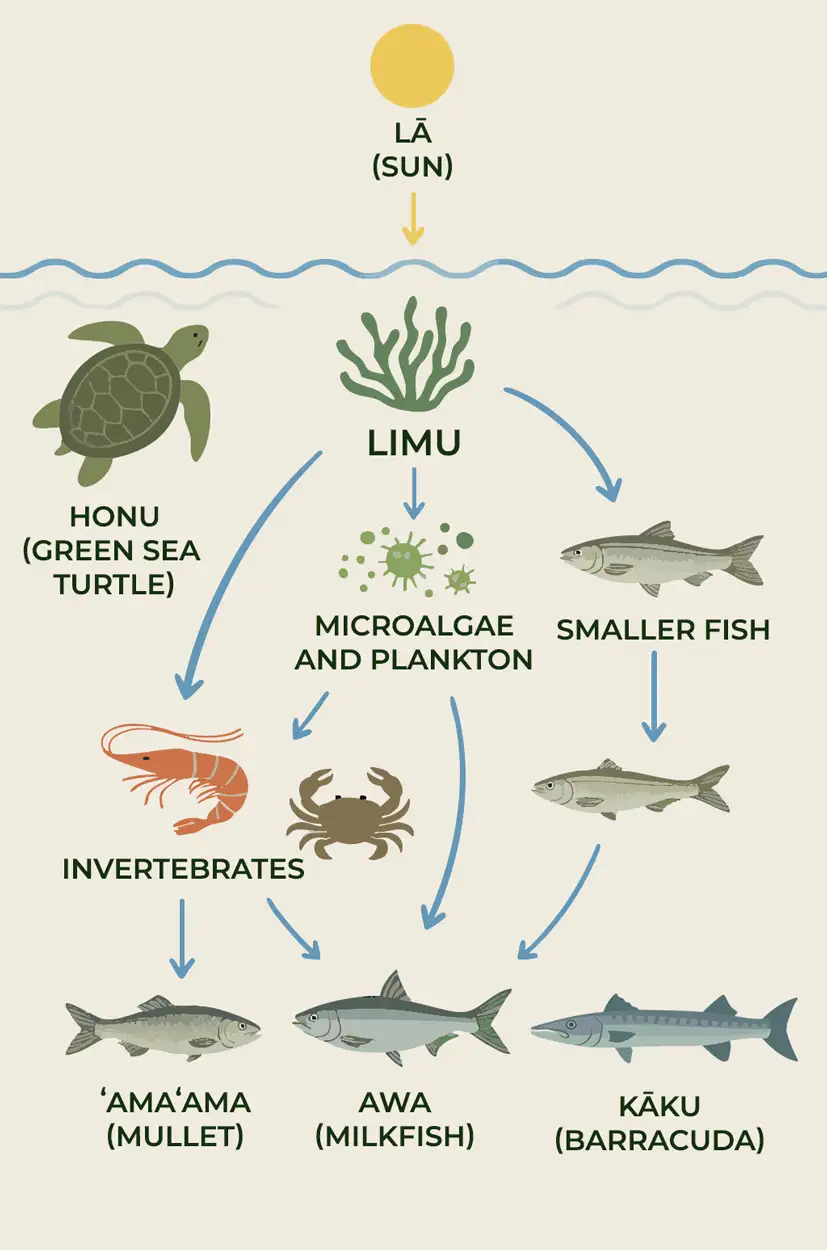
Invertebrate Cycles
ʻŌpae ʻula, crabs, and other invertebrates process detritus and algae, maintaining water quality while providing food for larger species and harvest for fishermen.
Predator Balance
ʻAwa (milkfish) and kāku (barracuda) occupy higher trophic levels, their presence indicates a healthy ecosystem with enough productivity to support multiple generations of growth.

